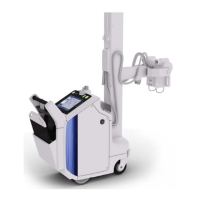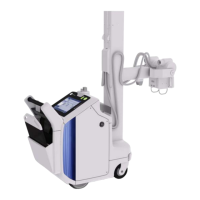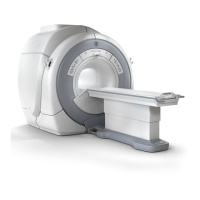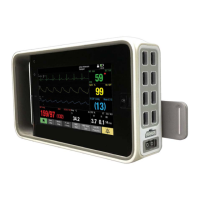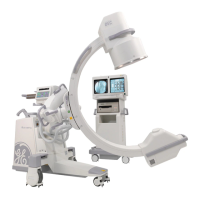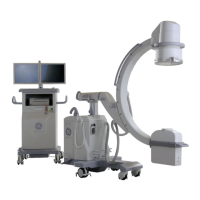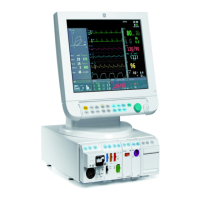Chapter 13: Advanced Applications
5495975-1EN Rev.9 13-4
© 2013-2017 General Electric Company. All rights reserved.
Low kVp
Can be set anywhere between 70 and 85. In general, a lower low-kVp (default is 80) will result in better
“tissue cancellation”. However, for large patients, slightly increasing the low kVp (e.g., to 85) may improve
x-ray penetration and consequently improve the noise characteristics of the resulting soft-tissue and
bone images.
Copper Filtration
Can be set to 0, 0.1 mm, 0.2 mm, or 0.3 mm. In general, less filtration will result in better “tissue cancella-
tion”.
Grid
The processing algorithms are optimized for abdominal imaging with grid IN. Removing the grid may
degrade image quality.
Patient Dose
Assuming correct selection of patient-size setting, the entrance dose (air-kerma) of the high-kVp expo-
sure should be approximately 20% to that of the low-kVp exposure. Hence, in general, the dose of a Dual
Energy abdominal exam (low-kVp PA or AP, high-kVp PA or AP) is approximately 120% that of a non-Dual
Energy abdominal exam (low-kVp PA or AP).
Dose estimates are not provided for Soft-Tissue and Bone images, since these images are not acquired
but derived (created by image processing algorithms). Dose estimates are provided for the acquired
(High-kVp and Low-kVp) images of a Dual Energy acquisition.
Dual Energy Image Processing Preferences
Using the Image Processing Preferences editor, separate look attributes (including brightness, contrast,
and edge sharpness) can be selected/customized for standard, soft-tissue, and bone images, with the
following exceptions:
Noise Reduction selection is not applicable to Soft-Tissue or Bone images since these types of images
already have specialized processing that includes noise suppression.
Even though Tissue Equalization (TE) can be applied to a Bone image, its application to this “non-
standard anatomy” may cause variability in image brightness. It is recommended that TE be turned
off (strength and area set to zero) for Bone images. Refer to Chapter 15: Preferences
-Tissue Equaliza-
tion Overview (p. 15-55) for more information.
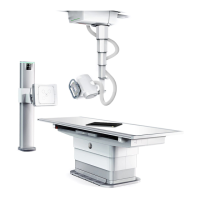
